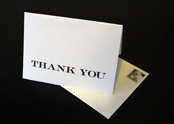Joseph Pulitzer said:
“Put it before them briefly, so they will read it, clearly, so they will appreciate it, picturesquely, so they will remember it, and above all, accurately, so they will be guided by its light.”
Ask yourself:
- What am I writing? To whom? Why?
- What will happen when I am successful?
- What tone is needed to get these results?
- What content will get these results?
Figuring out what you want to do BEFORE you start doing it is critical for many reasons. You will virtually eliminate writer’s block; the writing will flow far better, making it infinitely more readable; your reader will have a much better chance to “get it,” thereby enhancing their impression of you as a credible professional; and when properly presented, your writing will have a greater chance of achieving what you need. When you spend a little more time up front to think, to plan, you will spend a whole lot less time writing.
In an informal medium like email, all the rules we used to work with sometimes seem to melt away. Email is so much easier, so much faster, so much better – isn’t it? It sure can be. But it needs the same thought, the same planning that business writing has always required. In the business situation the same attention to grammar, usage, and format still applies.
Unfair though it may be, your reader also still judges you, and your organization by the only things he or she may know about you. So, unless you have established, or reinforced a relationship with that reader in addition to your email correspondence, perhaps through such activities as phone calls, meetings, or working together on a project, the only things he or she knows to judge you on are (1) how well you use the language; and (2) how quickly, and how well he or she “gets” what you are trying to say.
So take a look at that piece of email.
1. Overall, is it no more than a screen to a screen-and-a-half? If you have more to say, did you prepare an attachment for the longer message, and use the main email as a “cover letter” introducing your attachment?
2. Does your first paragraph – not more than a maximum of five lines – inform the reader of exactly what you want him or her to know? Or, does it persuade him or her to take a specific action? Is there any ambiguity? After the first five lines, is your reader immediately “in the picture”? Does he or she “get it” at a glance?
3. If you have a message detailing a number of steps or processes, are the details well presented in the next paragraph or two, following a logical, well-organized pattern?
4. Have you written – or not written, as appropriate – a good, strong close? Remember that just quitting after you have said what you need to say, is also an option, and may be a very good one.
5. Overall, how does this piece “read”? It’s all about the reader now. Knowing what you know about your reader, put yourself firmly in his or her shoes. What questions might your reader still have, after reading this email?
And then, still looking at it from that reader’s point of view, how would you expect him or her to feel about what you have written? Neutral? Happy? Angry? Depending on how you expect that reader might feel about what you have written, what can you expect him or her to do, as a result of those feelings? And then, what, if anything, do you need to do to be ready for that response?
6. Is it possible to put your reader completely in the picture in five lines, or fewer? If so, most readers would rather read no more than five lines than they would several pages. Of course this assumes that from those five lines your readers know exactly how your message applies to them, what they need to do, and how they need to do it, if action is required of them. “Action” can mean anything from how to go out and physically do some action, to how to think about, or change the way you think about an issue or a process.
These are the steps to take to “put your reader in the picture.” This is the way to “Put it before them briefly, so they will read it, clearly, so they will appreciate it, picturesquely, so they will remember it, and above all, accurately, so they will be guided by its light.”
To receive your Business Writing Tip of the Week automatically every week, please subscribe.
We appreciate your recommending a Gail Tycer business writing workshop for your workplace, or a shorter presentation for an upcoming professional meeting. Thank you.


